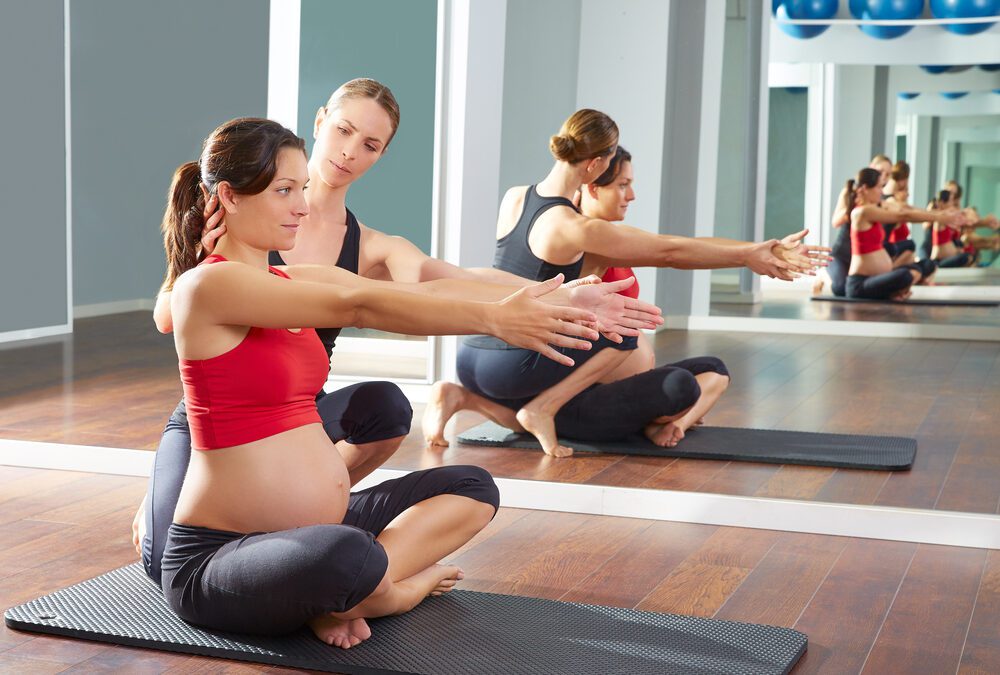

Pilates is a safe and effective exercise method that offers numerous benefits during pregnancy.
As expectant mothers undergo physical and emotional changes, Pilates can help strengthen the body, improve posture, alleviate discomfort, and enhance overall well-being.
In this article, we will explore the key advantages of practising Pilates during pregnancy, highlighting its positive impact on core strength, flexibility, body awareness, and pelvic floor stability.
Additionally, it can contribute to improved muscle tone and overall strength, assisting new mothers in adapting to the physical demands of caring for their newborns.
It’s important to consult with a qualified prenatal Pilates instructor or seek approval from your healthcare provider before starting or continuing any exercise routine during pregnancy. They can provide personalized guidance, ensure your safety, and help tailor the exercises to your specific needs at each stage of pregnancy.
By incorporating Pilates into your pregnancy routine, you can experience the numerous benefits it offers, including increased core strength, improved flexibility, enhanced body awareness, and better posture.
Embrace the power of Pilates as you navigate the beautiful journey of pregnancy, supporting your body and nurturing the well-being of both you and your baby.
Pregnancy places a huge amount of physical, mental and emotional stress on participants.
Their bodies are changing, their hormones are racing and they want to do whatever is best for the baby. It is a lovely but challenging time.
As the body changes, the increased abdominal weight can alter posture by encouraging lordosis (an exaggerated curve of the lumbar spine). This then places pressure on each disc between each of those vertebrae and can cause pain in the lower back.
Equally, old injuries such as a slipped disc may resurface because their ligaments (connecting bone to bone) are laxer due to the effects of a pregnancy hormone called ‘relaxin’.
Knowing that during pregnancy participants have looser ligaments and knowing that the spine is made up of a series of joints, we know that our pregnant clients have become less stable.
There are many ligaments connecting vertebrae together.
When you studied your anatomy, you learnt that the various parts of the vertebrae provide muscle attachments. They also provide ligament attachments. Ligaments help to maintain intervertebral joint stability.
Your spine has ligaments running top to bottom on the anterior aspect to help prevent hyperextension. There are top to bottom posterior vertebral body ligaments running through the vertebral canal which helps to prevent posterior disc bulging and hyperflexion.
There are a series of ligaments running from lamina to lamina, top to bottom on both sides of the spine. These are crucial for maintaining posture and normal curves of the spine. There is a ligament between each of the transverse processes on each side of every vertebra to limit lateral flexion.
There are ligaments connecting the spinous processes one vertebrae at a time to limit flexion as well as others connecting 2 or 3 vertebrae at a time at the apex of the spinous process, also to limit flexion. What we can take from this is there are an awful lot of ligaments helping to support the spine.
Pregnancy increases strain on the spine due to the additional abdominal weight and relaxin decreases spine stability by allowing the supportive ligaments to become lax.
When we put it like that, hopefully, you can see why it’s not only safe to do Pilates in pregnancy, it is highly recommended.
If the pregnant client is new to Pilates, the initial focus will be on body awareness and transverse abdominis (TVA) activation.
As the client begins to understand how to activate this, their pregnancy will be progressing, so the ideal focus would be on standing, sitting and walking posture, pelvic floor activation, optimal feeding and lifting positions, advice on posture while lifting car seats in and out of cars and overall alignment to stabilise their spine.
TVA activation is safe and recommended throughout pregnancy, even if diastasis recti (separation of the abdominal wall) is present.
If the pregnant client is a regular to Pilates, the overall focus will be on maintaining their neutral spine alignment and understanding how they can apply this after they have given birth and gradually lowering the level of each exercise adapting for safety. Relaxin can be in the body for up to 4 months after breastfeeding.
This could easily mean that a mother of a one-year-old still has a potentially unstable spine (and pelvis).
As their pregnancy progresses, adaptations will need to be made so the client no longer lies prone (12 weeks) or supine (16 weeks) and is given alternative ways to challenge stability (seated on a fit ball).
TVA will be able to contract throughout pregnancy and is an important tool in helping to prevent pregnancy-related back pain.
If you would like to learn more about exercise during pregnancy, please enquire about our Pre and Post-Natal Exercise course.